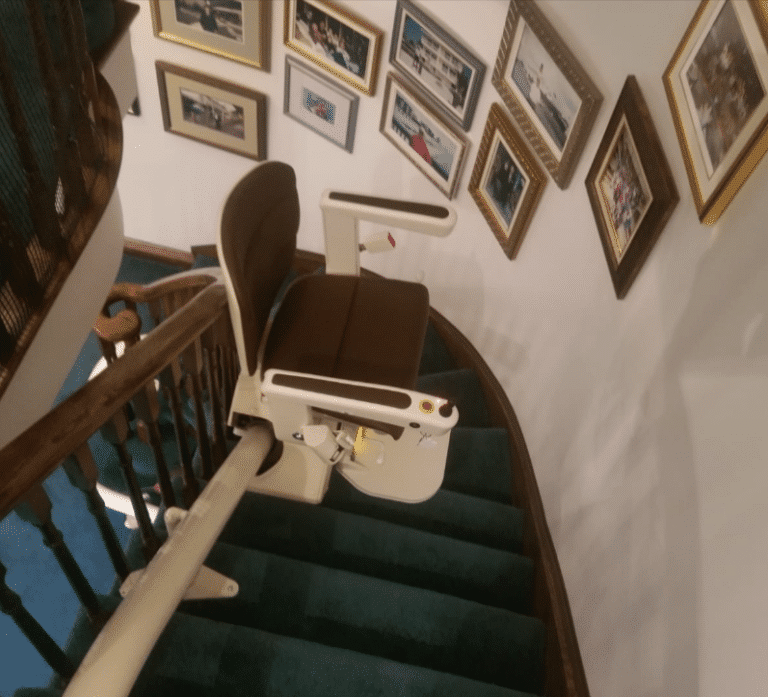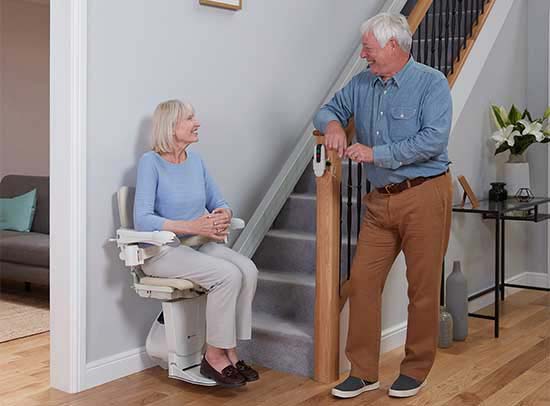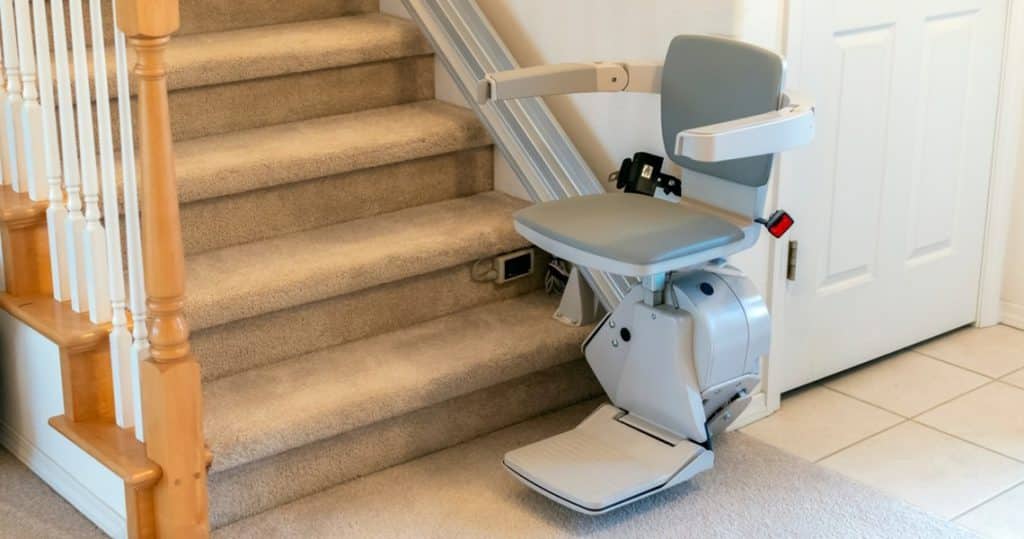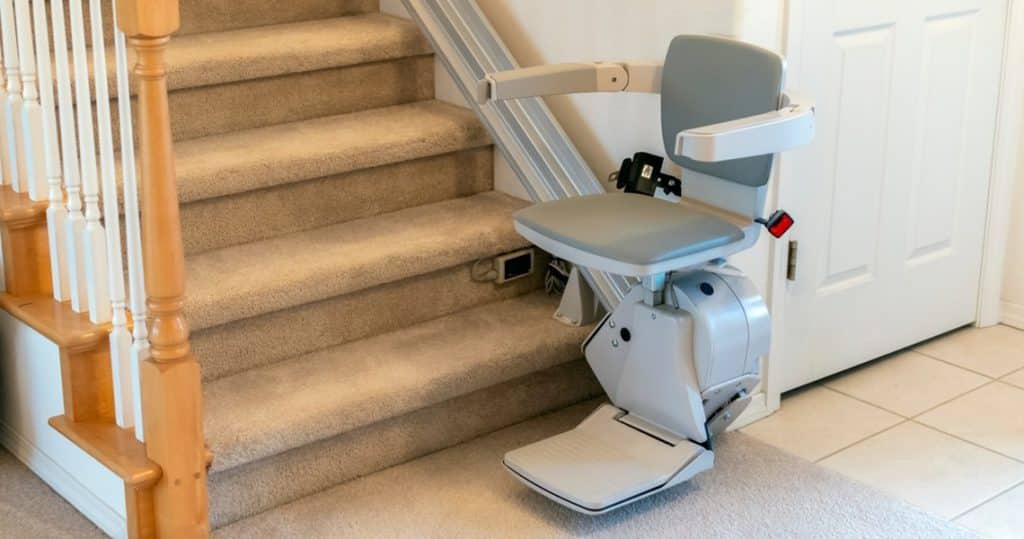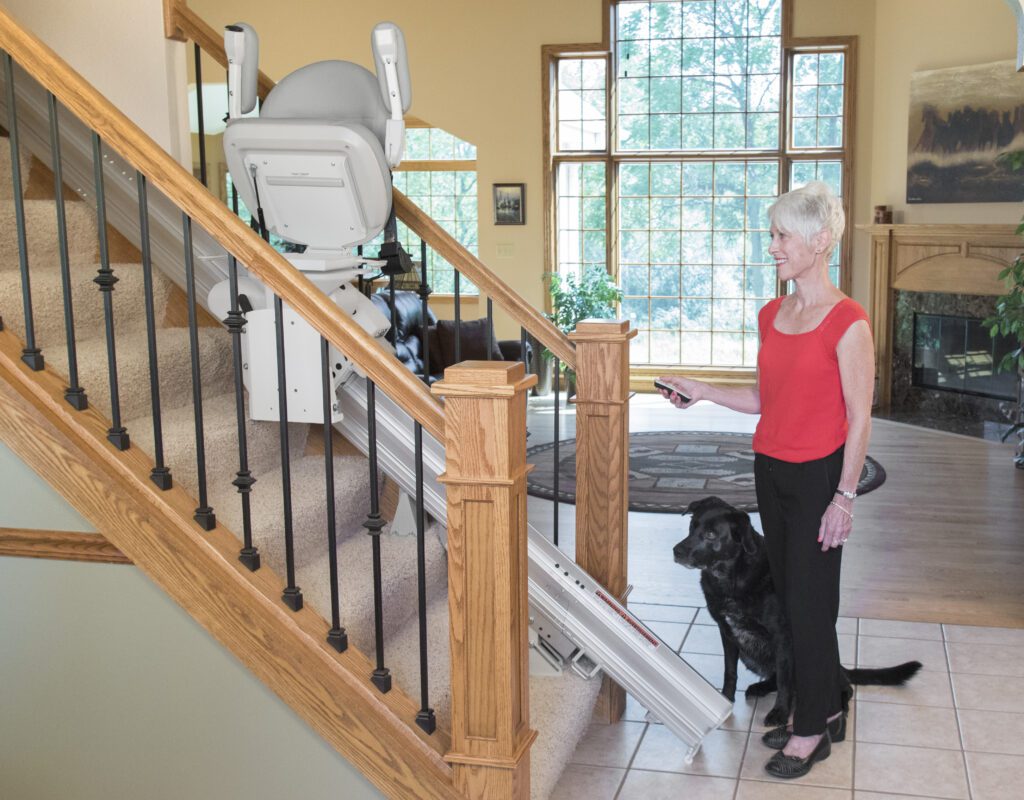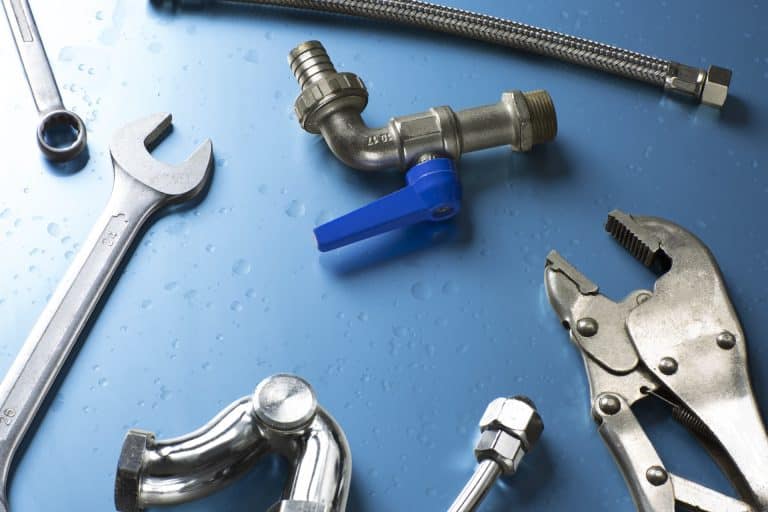Navigating stairs can be a significant challenge for seniors and people with disabilities. Fortunately, chair lifts provide a practical solution, enhancing mobility, safety, and independence. In this article, we’ll explore the top 5 benefits of installing a chair lift in your home, drawing on real-life stories and expert insights to highlight their transformative impact.
Understanding Chair Lifts
What is a Chair Lift?
A chair lift is a motorized device designed to help individuals move up and down stairs safely and comfortably. Chair lifts consist of a seat, armrests, and a footrest mounted on a rail system that runs along the staircase. They are powered by a motor that gently glides the chair along the rail, allowing users to ascend and descend stairs with ease. There are various types of chair lifts available, including:
- Straight chair lifts: Designed for standard, straight staircases.
- Curved chair lifts: Custom-made to fit the unique contours of curved or spiral staircases.
- Outdoor chair lifts: Built to withstand outdoor conditions, perfect for exterior stairs.
Who Can Benefit from a Chair Lift?
Chair lifts are particularly beneficial for:
- Seniors experiencing mobility issues due to aging or health conditions.
- Individuals with disabilities that limit their ability to navigate stairs.
- People recovering from surgery or injury who need temporary assistance with stairs.
By installing a chair lift, these individuals can regain their independence and enhance their quality of life.
Benefit 1: Increased Mobility
Overcoming Mobility Challenges
Mobility issues can significantly impact daily living, making it difficult to move freely around the home. For seniors and individuals with disabilities, climbing stairs can be daunting and sometimes impossible. Chair lifts provide a practical solution to these challenges, offering a safe and reliable way to navigate stairs.
Enhancing Daily Activities
With a chair lift, everyday activities become more manageable. Users can easily access different levels of their home, participate in household tasks, and maintain their routines without assistance. For instance:
- Carrying laundry up and down the stairs becomes hassle-free.
- Moving between the bedroom and living areas is no longer a struggle.
- Engaging in hobbies and spending time with family members on different floors is made easier.
Users often report significant improvements in their daily lives. As one user, John, shares:
“The chair lift has given me back my freedom. I can move around my home without fear of falling.”
Benefit 2: Enhanced Safety
Reducing the Risk of Falls
Falls are a leading cause of injury among seniors, often resulting in serious consequences such as fractures and hospitalizations. According to the Centers for Disease Control and Prevention (CDC), one in four Americans aged 65 and older falls each year. Chair lifts can significantly reduce the risk of falls by providing a stable and secure means of navigating stairs.
Safety Features of Chair Lifts
Modern chair lifts come equipped with a variety of safety features to ensure user protection:
- Seat belts: Secure the user in place during transit.
- Swivel seats: Allow for easy and safe entry and exit at the top and bottom of the stairs.
- Sensors: Detect obstacles on the stairs and stop the lift to prevent accidents.
- Remote controls: Enable users to call or send the chair lift to different floors as needed.
These features collectively enhance the safety and reliability of chair lifts, making them a valuable addition to any home.
Benefit 3: Promoting Independence
Maintaining Personal Freedom
For many seniors and individuals with disabilities, maintaining independence is crucial for emotional and psychological well-being. Chair lifts empower users to navigate their homes without relying on others for assistance. This sense of autonomy can boost self-esteem and confidence, leading to a more fulfilling and active lifestyle.
Aging in Place
Aging in place refers to the ability of seniors to live in their own homes safely and independently for as long as possible. Chair lifts play a vital role in supporting this concept by eliminating the need to move to a single-story home or assisted living facility. By making multi-level homes accessible, chair lifts allow seniors to stay in their familiar environments, surrounded by cherished memories and belongings.
Benefit 4: Convenience and Comfort
User-Friendly Design
Chair lifts are designed with user convenience and comfort in mind. Key features include:
- Ergonomic seats: Provide comfortable seating during transit.
- Adjustable armrests and footrests: Enhance user comfort and support.
- Remote controls: Allow users to operate the chair lift with ease.
- Battery backup: Ensures the lift remains operational during power outages.
These features make chair lifts not only functional but also comfortable for daily use.
Integrating Chair Lifts into Home Design
Contrary to common concerns, chair lifts can be integrated into home design without compromising aesthetics. Many manufacturers offer customization options to match the decor of your home. Some tips for seamless integration include:
- Choosing neutral colors: To blend with existing color schemes.
- Opting for compact designs: To minimize space usage and maintain clear stairways.
- Selecting stylish upholstery: To enhance the overall appearance of the lift.
With thoughtful planning, a chair lift can become a subtle and elegant addition to your home.
Benefit 5: Cost-Effectiveness
Comparing Costs
While the initial investment in a chair lift may seem substantial, it is often more cost-effective in the long run compared to alternatives. Consider the costs of:
- Moving to a single-story home.
- Renovating your home to eliminate stairs.
- Transitioning to an assisted living facility.
Chair lifts provide a one-time investment that enables users to remain in their homes and avoid these costly alternatives.
Financing Options and Insurance
Many chair lift providers offer financing plans to make the purchase more affordable. Additionally, some insurance policies and government programs may cover part or all of the cost of a chair lift. It’s important to explore these options and consult with providers to find the best financial solution for your needs.
Frequently Asked Questions
How Do I Choose the Right Chair Lift?
When selecting a chair lift, consider the following factors:
- Type of stair lift: Straight, curved, or outdoor.
- Key features: Safety features, ease of use, customization options.
- Budget: Initial cost and long-term maintenance expenses.
- Space: Available space on your staircase and the lift’s footprint.
Consulting with a professional can help you make an informed decision that meets your specific needs.
What is the Installation Process Like?
The installation process for a chair lift typically involves the following steps:
- Assessment: A professional will assess your staircase and discuss your needs.
- Customization: If you require a curved chair lift, measurements will be taken for a custom fit.
- Installation: Professionals will install the lift, ensuring it is securely mounted and functioning correctly.
- Testing: The lift will be tested to ensure safety and reliability.
Professional installation is crucial to ensure the chair lift operates safely and efficiently.
How Do I Maintain a Chair Lift?
Routine maintenance is essential to ensure your chair lift operates smoothly and safely. Proper upkeep not only extends the lifespan of the lift but also helps prevent unexpected breakdowns and costly repairs. Here are some detailed tips for maintaining your chair lift:
Regular Cleaning
- Rails and Tracks: Dust and debris can accumulate on the rails and tracks, affecting the lift’s performance. Wipe them down regularly with a soft, damp cloth to keep them clean.
- Seat and Armrests: Use a mild detergent and a damp cloth to clean the seat, armrests, and footrest. Avoid using harsh chemicals that could damage the upholstery or components.
- Control Panels: Dust the control panels and remote controls to ensure they function correctly. Use a dry cloth to avoid moisture damage.
Lubrication
- Moving Parts: The gears and other moving parts of your chair lift need regular lubrication to reduce friction and wear. Check the manufacturer’s recommendations for the type of lubricant to use and the frequency of application.
- Rail System: Apply lubricant to the rail system as instructed by the manufacturer. This helps the chair glide smoothly along the tracks.
Battery Checks
- Battery Backup: If your chair lift has a battery backup, it’s crucial to check the battery regularly. Test the battery monthly to ensure it holds a charge and replace it every 2-3 years, or as recommended by the manufacturer.
- Charging System: Ensure the charging system is functioning properly. The lift should charge when parked at the designated charging points on the rail.
Professional Servicing
- Annual Inspections: Schedule an annual maintenance check with a professional technician. They will inspect all components, tighten any loose parts, and address potential issues before they become serious problems.
- Safety Features: Have a professional test the safety features, such as the seat belt, swivel seat mechanism, and sensors, to ensure they are working correctly.
- Firmware Updates: If your chair lift includes electronic controls or software, check for firmware updates that may improve functionality or safety.
Troubleshooting Common Issues
- Unusual Noises: If you hear any unusual noises during operation, such as grinding or squeaking, it may indicate a need for lubrication or that a part is worn and needs replacement.
- Slow Movement: If the chair lift is moving slower than usual, check the rails for obstructions and clean them if necessary. If the problem persists, contact a professional technician.
- Error Messages: Refer to the user manual for troubleshooting error messages displayed on the control panel. If you cannot resolve the issue, contact the manufacturer or a professional service provider.
Conclusion
Chair lifts offer numerous benefits that significantly improve the quality of life for seniors and individuals with disabilities. By enhancing mobility, ensuring safety, promoting independence, providing convenience and comfort, and being cost-effective, chair lifts are a practical solution for making homes more accessible and inclusive. If you or a loved one could benefit from a chair lift, consider exploring your options and consulting with professionals for the best solution.
For more information on chair lifts and other mobility equipment, visit LifeCare Mobility Solutions.
We invite you to explore chair lift options and share your own stories and experiences. How have chairlifts impacted your life? If you’re considering a chair lift, reach out for more information or to schedule a consultation. Your journey to improved mobility and independence starts here.

